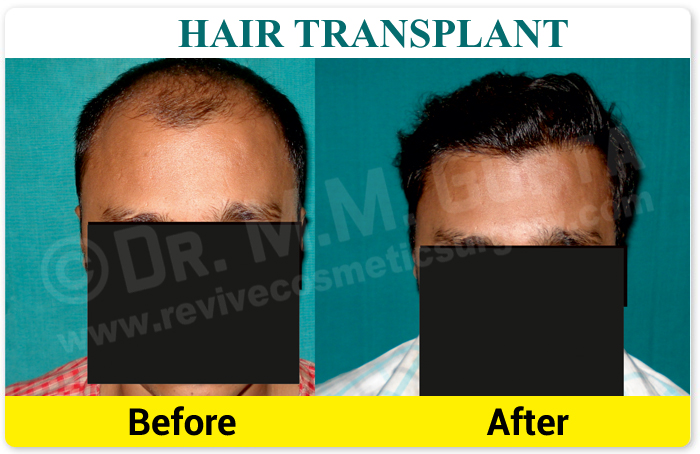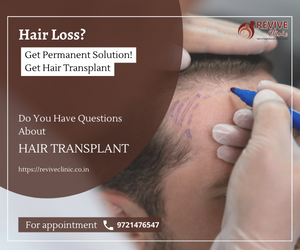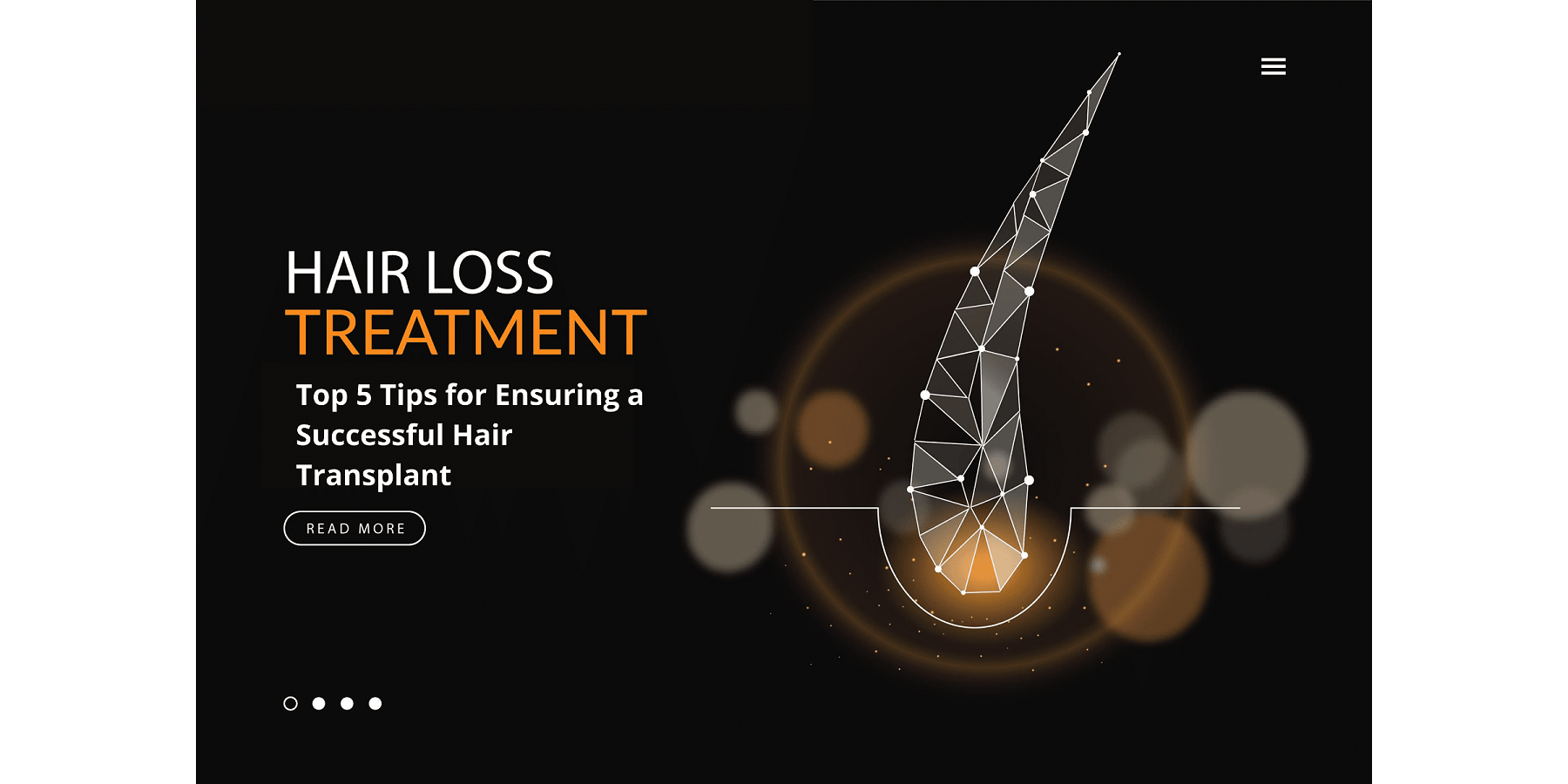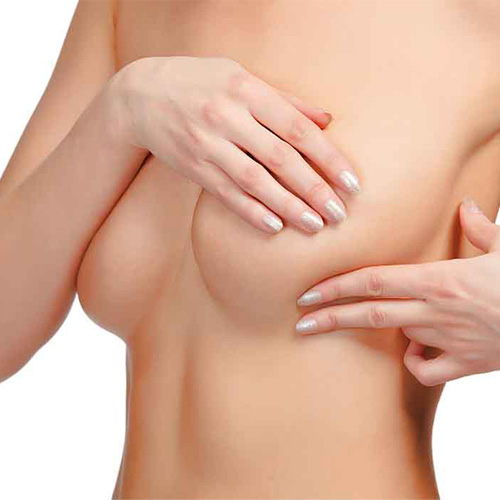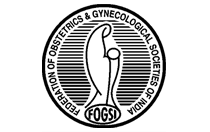- Pioneer of Hair Transplant with world's latest & Best Technique FUT, in up
- Excellent Quality Hair Transplantation by highly Skilled & Experienced Plastic Surgeon
- Pioneer of Hair Transplant with scar less technique FUE, in up
- World class surgery at affordable cost with life changing results
- Pioneer of body hair to scalp transplant in up
- Many thousand patients with successful Hair Transplant results
Quick Contact
revivecliniclko@gmail.com
+91 9721476547, +91 8400746979

Hair Loss Facts
Male Baldness Pattern
Male Baldness involves the state of hair loss where it often grows naturally, especially on the head. The most common form of male or female baldness is a progressive hair thinning condition at crown area called androgenic alopecia or "male pattern baldness" that occurs in adult male humans.
The Norwood Scale can be used to categorize typical hair loss patterns in men. The Norwood scale provides easy to reference images to understand the male pattern baldness
Norwood's Classification
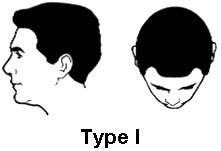 Minimal or no recession of the hair line.
Minimal or no recession of the hair line.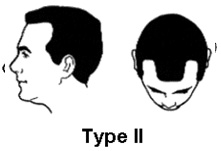 Triangular, usually symmetrical, areas of recession at the fronto-temporal hair line.
Triangular, usually symmetrical, areas of recession at the fronto-temporal hair line.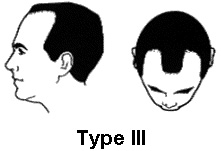 This represents the minimal extent of hair loss in men sufficient to be considered as baldness in men according to Norwood. Most type III scalps have deep symmetrical hair fall at the temples that are bare or only sparsely covered by hair.
This represents the minimal extent of hair loss in men sufficient to be considered as baldness in men according to Norwood. Most type III scalps have deep symmetrical hair fall at the temples that are bare or only sparsely covered by hair.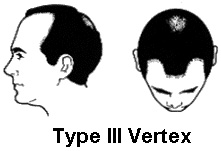 In this presentation, the hair loss is primarily from the vertex with limited recession of the fronto-temporal hair line that does not exceed the degree of recession seen in type III.
In this presentation, the hair loss is primarily from the vertex with limited recession of the fronto-temporal hair line that does not exceed the degree of recession seen in type III.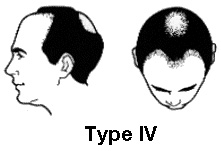 The fronto-temporal recession is more severe than in type III. There is sparse hair or no hair on the vertex. The two areas of hair loss are separated by a band of moderately dense hair that extends across the top. This band connects with the fully haired fringe on the sides of the scalp. Type IV is distinguished from type III vertex in which the loss is primarily from the vertex.
The fronto-temporal recession is more severe than in type III. There is sparse hair or no hair on the vertex. The two areas of hair loss are separated by a band of moderately dense hair that extends across the top. This band connects with the fully haired fringe on the sides of the scalp. Type IV is distinguished from type III vertex in which the loss is primarily from the vertex.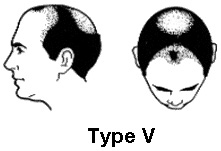 The vertex hair loss region in men is still separated from the fronto-temporal region but it is less distinct. The band of hair across the crown is narrower and sparser. The vertex and fronto-temporal regions of hair loss are bigger. Viewed from above, types V, VI, and VII are all characterized by surviving hair on the sides and back of the scalp forming a distinct horseshoe shape.
The vertex hair loss region in men is still separated from the fronto-temporal region but it is less distinct. The band of hair across the crown is narrower and sparser. The vertex and fronto-temporal regions of hair loss are bigger. Viewed from above, types V, VI, and VII are all characterized by surviving hair on the sides and back of the scalp forming a distinct horseshoe shape.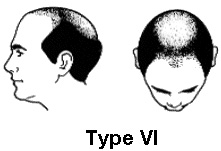 The bridge of hair that crossed the crown is now gone with only sparse hair remaining. The fronto-temporal and vertex regions are now joined together and the extent of hair loss in men is greater.
The bridge of hair that crossed the crown is now gone with only sparse hair remaining. The fronto-temporal and vertex regions are now joined together and the extent of hair loss in men is greater.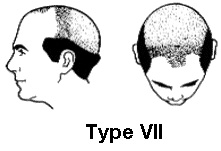 MThe most severe form of hair loss pattern or malebaldness presents as extensive loss. A narrow band of hair in a horseshoe shapes survives on the sides and back of the scalp. This hair is usually not dense and may be quite fine. The hair is also sparse on the nape of the neck and in a semi circle over both ears.
MThe most severe form of hair loss pattern or malebaldness presents as extensive loss. A narrow band of hair in a horseshoe shapes survives on the sides and back of the scalp. This hair is usually not dense and may be quite fine. The hair is also sparse on the nape of the neck and in a semi circle over both ears.The Cause of Male Pattern Baldness
The main cause of baldness is heredity. It has been proven that Male Pattern Baldness or Androgenetic Alopecia is directly related to the effect of hormones on the hair follicle. In genetically predisposed individual the hairs in the frontal area are sensitive to the male hormone DHT (di-hydro testosterone) because in these individual frontal hairs shows more number of hormone binding receptors so making these hairs more vulnerable to damage by the hormone, which causes reduced growth and thinning of hair in men in these areas. But no matter how extensive the baldness, there is always a "Horse-shoe" shaped area of permanent hair at the back and sides of the head. Scientists have found that these hairs are genetically programmed to resist the effect of male hormones. Such hairs when transplanted into bald areas continue to survive and grow naturally. This forms the basis of hair transplantation. Although anti-androgen drugs may slow or halt hair loss, they are really only effective at re-growing hair in the crown.
Treatment of Male Pattern Baldness / Hair Transplant in Men
Male baldness / hair loss Treatments range from the medicinal to the surgical. FDA- approved medications like Minoxidil and Finasteride can provide effective short-term relief from baldness and have been a popular baldness remedy for years.
- Minoxidil is a topical solution that has proven to be one of few effective baldness treatments in men that it helps follicle re-growth but works for only about 50-60% of all patients. The mechanism by which minoxidil promotes hair growth is not fully understood. Hypothetically, by widening blood vessels and opening potassium channels, it allows more oxygen, blood, and nutrients to the follicles. Adverse effects associated with Minoxidil include itching, skin rash, acne, burning, inflammation, and swelling. Serious side effects that may indicate too much of the medication has absorbed to your body include blurred vision, chest pain, dizziness, fainting and irregular heartbeat.
- Finesteride on the other hand, is very effective in stemming existing hair loss but is most powerful when used in the early stages of male-pattern hair loss and baldness. It works by binding to the enzyme that would otherwise convert free testosterone to DHT. Side effects associated with finasteride include chills; cold sweats; confusion; dizziness; hives; swelling in the legs, arms and face; tingling; erectile dysfunction; decreased libido; and ejaculatory dysfunction; and weight gain.
- Dutasteride is similar to finasteride, but may be more effective.
Unfortunately these medications are temporary in nature, as results cease once use of the medication has been discontinued.
The Hair Transplantation is the most effective and natural remedy to treat male pattern baldness. It involves transplanting hair follicles from healthy areas of the scalp, like the back and sides, to the bald areas, such as the temples and the top of the scalp. The Follicular Units Hair Transplantation (FUHT) provides undetectable and excellent natural looking results of hair transplantation, and it is considered to be world's latest and best technique for natural hair restoration.
Other causes of Hair Loss both in male and females are- severe and prolonged illness, poor diet especially protein deprivation, iron deficiency anemia, hormonal changes like those in pregnancy; puberty; and menopause, thyroid disease (both hypo & hyper thyriodism), some skin infections and diseases (eg. Ringworm, Lupus, Sarcoidosis etc.), chemotherapy, and low vitamin levels, Alopecia areata, chemotherapy etc.
Female Pattern Baldness
Female pattern baldness involves a typical pattern of loss of hair in women, caused by hormones, aging, and genes. The Ludwig Scale can be used to categorize typical hair loss patterns in women.
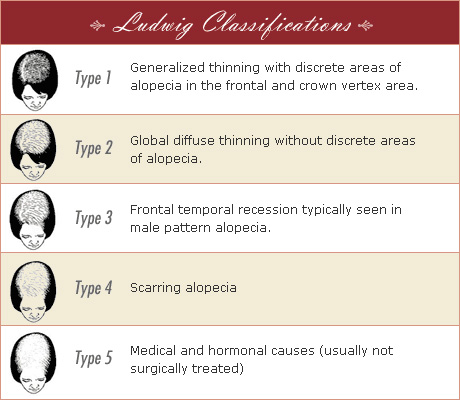
Causes of Female Pattern Baldness
Baldness in Females occurs when hair falls out but new hair does not grow in its place. The cause of the failure to grow new hair in female pattern baldness is not well understood, but it is associated with genetic predisposition, aging, and levels of endocrine hormones (particularly androgens, the male sex hormones).
Changes in the levels of androgens can affect hair production. For example, after the hormonal changes of menopause, many women find that the hair on the head is thinned, while facial hair is coarser. Although new hair is not produced, follicles remain alive, suggesting the possibility of new hair growth.
Female pattern baldness is usually different from that of male pattern baldness. The hair thins all over the head, but the frontal hairline is maintained. There may be a moderate loss of hair on the crown, but this rarely progresses to total or near baldness as it may in men.
Best Hair Loss Treatment for Women
The hair loss of female pattern baldness is permanent. In most cases, it is mild to moderate. No treatment is required if the person is comfortable with her appearance. The only drug or medication approved by the United States Food and Drug Administration (FDA) to treat female pattern baldness is minoxidil, used on the scalp. For women, the 2%- 5% concentration is recommended. Minoxidil may help hair to grow in 20% to 25% of the female population, and in the majority it may slow or stop the loss of hair. Treatment is expensive, however, and hair loss starts again when minoxidil use is stopped.
Hair transplants consist of removal of tiny plugs of hair from areas where the hair is continuing to grow and placing them in areas that are balding. The procedure usually requires multiple transplantation sessions. Results, however, are often excellent and natural.
Photo Gallery FAQ Follicular Unit Hair TransplantsWhat makes us unique?
Our Efficiency | Our Competency | Our Reliability | Our Dedication | Our Expertise in the respective fields.
Best Doctors
We have a team of doctors who are best in their respective fields of specialization for best results and maximum patient safety.
Best Plastic & Cosmetic Surgeon
MBBS, MS, MCh, DNB
- Our plastic and cosmetic surgeon are highly trained and best Hair Transplant Surgeon with more than 14 years of experience in doing Hair Transplant with excellent & world-class results.
- The most trusted, skilled, and experienced Hair Transplant and Cosmetic Surgeons in Lucknow and Varansi is owned by Revive Clinic
- Our surgeon is a Pioneer of the FUT technique of Hair Transplant in Uttar Pradesh.
- Our surgeon is a Pioneer of the FUE technique of Hair Transplant in Uttar Pradesh.
Best Gynecological Surgeon
MBBS, DGO, DNB
- Our gynecological and obstetrics doctor is highly trained Obstetrician, Gynecologist & Laparoscopic Surgeon with more than 17 years of experience.
- Our gynecological and obstetrics doctor is working as a Senior Consultant Obstetrician & Gynecologist at Fatima Hospital, Lucknow.
- Revive Clinic posseses one of the best and highly experienced Obstetrics & Gynecology & Laparoscopic doctors in Lucknow.
Ultra-modern Centre
Hair Transplant Center
- We have state of art ultra-modern facility for hair transplant. We use ultra-hygienic and the best safety method for patient care.
- We have a dedicated Hair Transplant Operation Theater (Hair Lab.) with temperature and humidity control, ergonomically designed cutting platform, cold lights, ceiling lights with heat filters, preventing any damage to the Hair grafts.
- Revive Clinic is one of the leading hair transplant clinics in Lucknow, Uttar Pradesh, India. Our hair treatment procedures are best in class and give the best results.
- We offer the best hair transplant treatment with all the latest and best techniques & instruments.
- We ensure maximum patient's privacy, it is our first priority.
Obstetrical & Gynecology Treatment
- We have advanced facilities & equipment for providing the best obstetrical & gynecological treatment.
- All treatments are done by our highly experienced doctor taking utmost care for giving the best results and high priority for patient safety.
- At Revive we evaluate every patient for normal delivery as a primary option, doctor opt for caesarian delivery only in high-risk conditions for the safety of mother and baby.
- Revive clinic is one of the best obstetrical & gynecological clinics in Lucknow.
- Revive Clinic offers a wide range of obstetrical & gynecological care i.e. From contraceptive counseling to general gynecological & obstetrical services including Infertility Treatment for women at different stages of life, we are best in our field.
Best Results
- Our success is well spoken by thousands of our happy and satisfied patients of Hair Transplant & Plastic & Cosmetic Procedures both national as well as international. We are committed to patient's safety & satisfaction.
- 100% natural-looking results are given by our best hair transplant and cosmetic surgeon, with no side effects.
- We provide the best hair transplant & cosmetic Surgery results at very affordable costs.
- We have excellent results for infertility treatment.
- We give the best results for all Obstetric & Gynecological problems at a very affordable cost.
Professional Staff
Why us

State of Art CenterLatest Equipment & Techniques
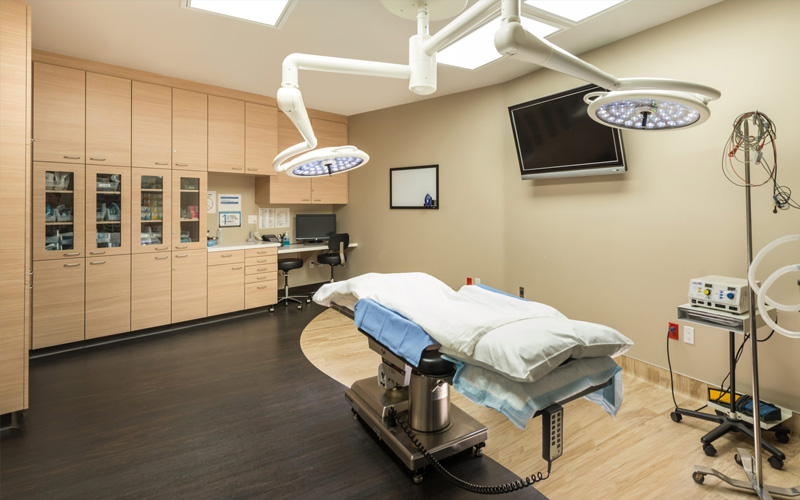
- We use latest Equipments & Techniques to deliver top class Treatments
- Our center have relaxing environment with modern facilities and look
Qualified Doctor & StaffBoard Certified and Specialized Team
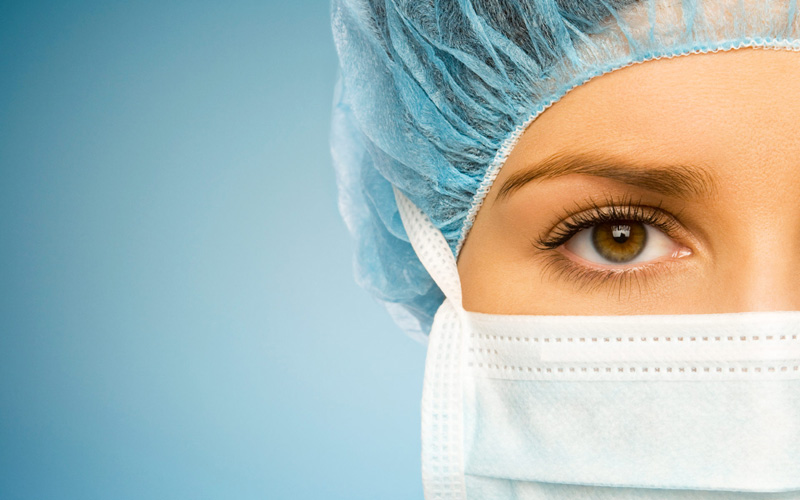
- Dr. M. M. Gupta is; experienced, highly qualified and skilled cosmetic surgeon; providing surgical services of International Standard.
- Our team consists of trained and caring staffs, available 24x7 for patient's care.
World Class ResultsMaximum Patient Satisfaction

- Combination of State of Art Center and Experienced, Highly Qualified & Skilled Cosmetic Surgeon bring out world class results, every patient expect.
- You can see Live Surgical Procedures and also meet our satisfied clients to gain confidence about our Excellent Results.

Our Specialities



Quick Contact
revivecliniclko@gmail.com
+91 9721476547, +91 8400746979
Mail Your Query Here

Credentials
Face
Hair & Skin
Body
Breast











